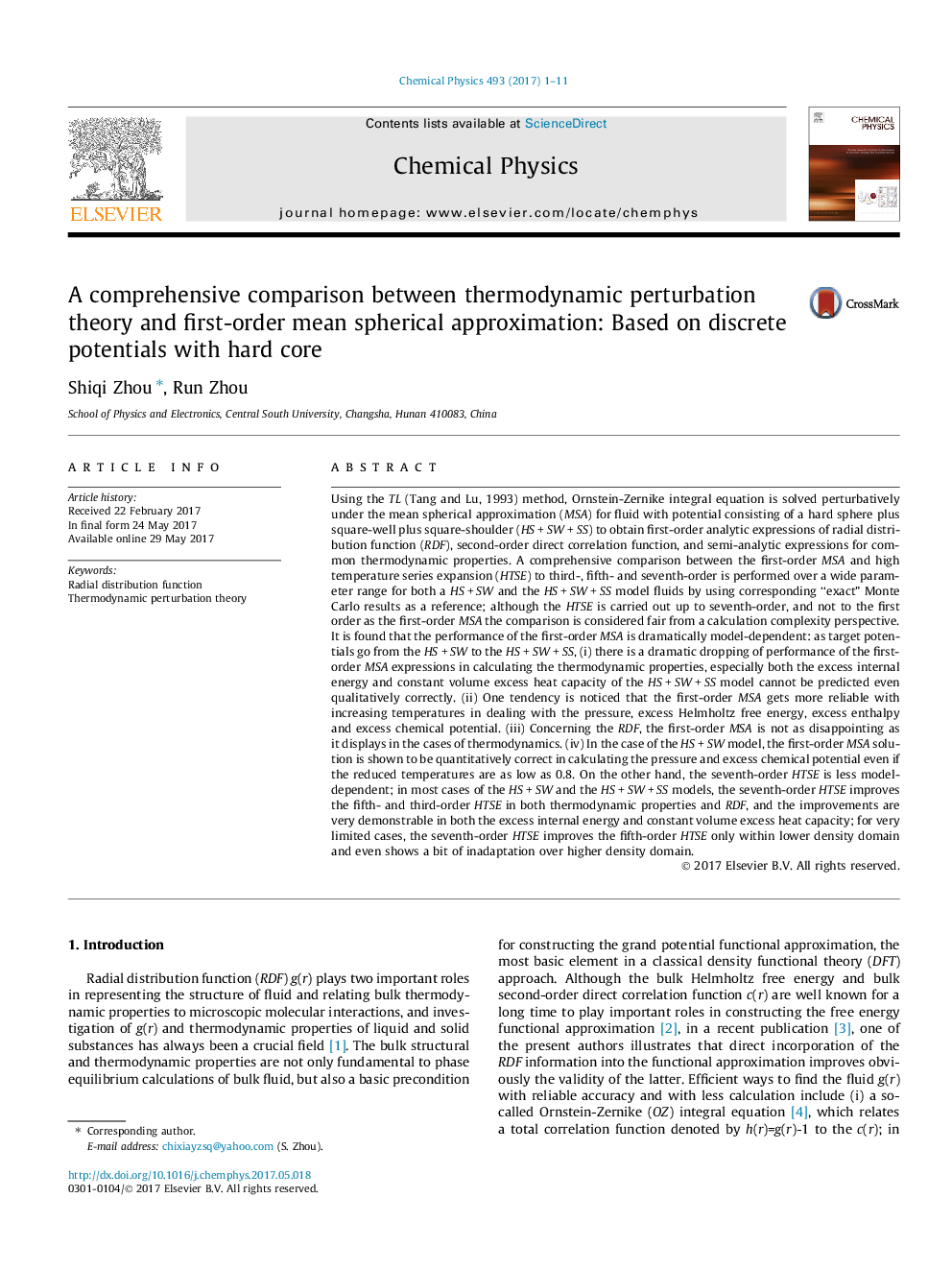| کد مقاله | کد نشریه | سال انتشار | مقاله انگلیسی | نسخه تمام متن |
|---|---|---|---|---|
| 5372612 | 1504178 | 2017 | 11 صفحه PDF | دانلود رایگان |
Using the TL (Tang and Lu, 1993) method, Ornstein-Zernike integral equation is solved perturbatively under the mean spherical approximation (MSA) for fluid with potential consisting of a hard sphere plus square-well plus square-shoulder (HSÂ +Â SWÂ +Â SS) to obtain first-order analytic expressions of radial distribution function (RDF), second-order direct correlation function, and semi-analytic expressions for common thermodynamic properties. A comprehensive comparison between the first-order MSA and high temperature series expansion (HTSE) to third-, fifth- and seventh-order is performed over a wide parameter range for both a HSÂ +Â SW and the HSÂ +Â SWÂ +Â SS model fluids by using corresponding “exact” Monte Carlo results as a reference; although the HTSE is carried out up to seventh-order, and not to the first order as the first-order MSA the comparison is considered fair from a calculation complexity perspective. It is found that the performance of the first-order MSA is dramatically model-dependent: as target potentials go from the HSÂ +Â SW to the HSÂ +Â SWÂ +Â SS, (i) there is a dramatic dropping of performance of the first-order MSA expressions in calculating the thermodynamic properties, especially both the excess internal energy and constant volume excess heat capacity of the HSÂ +Â SWÂ +Â SS model cannot be predicted even qualitatively correctly. (ii) One tendency is noticed that the first-order MSA gets more reliable with increasing temperatures in dealing with the pressure, excess Helmholtz free energy, excess enthalpy and excess chemical potential. (iii) Concerning the RDF, the first-order MSA is not as disappointing as it displays in the cases of thermodynamics. (iv) In the case of the HSÂ +Â SW model, the first-order MSA solution is shown to be quantitatively correct in calculating the pressure and excess chemical potential even if the reduced temperatures are as low as 0.8. On the other hand, the seventh-order HTSE is less model-dependent; in most cases of the HSÂ +Â SW and the HSÂ +Â SWÂ +Â SS models, the seventh-order HTSE improves the fifth- and third-order HTSE in both thermodynamic properties and RDF, and the improvements are very demonstrable in both the excess internal energy and constant volume excess heat capacity; for very limited cases, the seventh-order HTSE improves the fifth-order HTSE only within lower density domain and even shows a bit of inadaptation over higher density domain.
Journal: Chemical Physics - Volume 493, 17 August 2017, Pages 1-11
